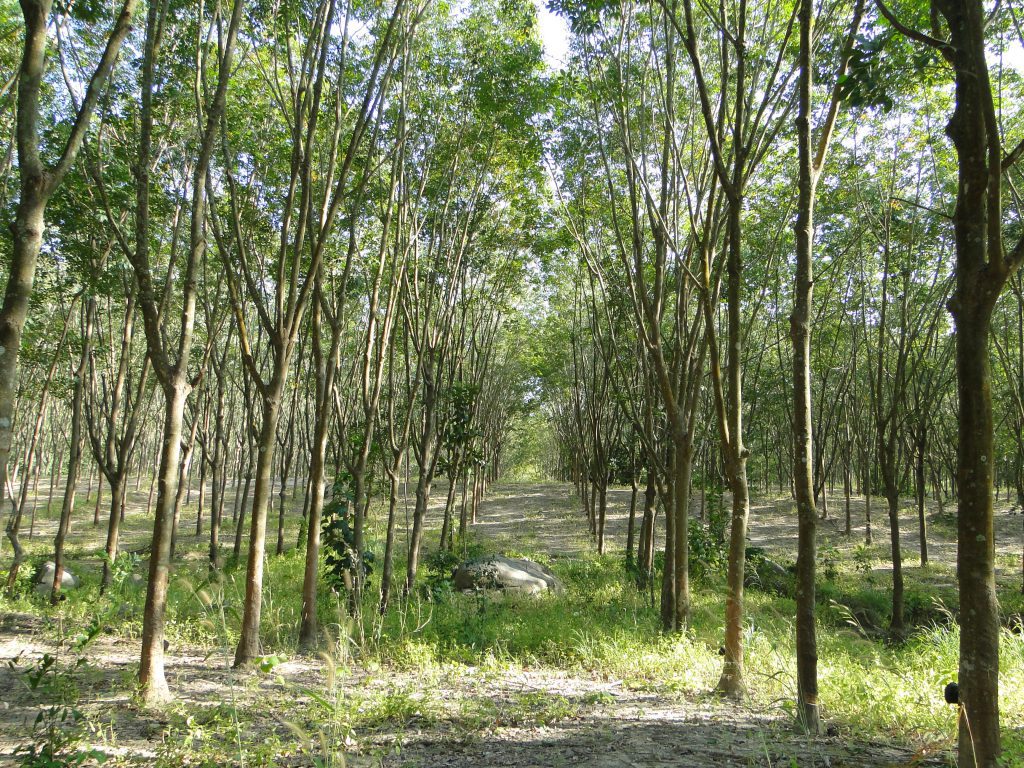Sustainable Harvesting of Latex

Natural latex comes from the milky fluid in the bark of the rubber tree (Hevea Brasiliensis).
This sap protects the tree against bacteria and insects.
The rubber farmer will carefully strip away the bark and expose the latex vessels that grow in a spiral around the tree. The latex will run down the side of the tree and is collected into a container.
One tree will provide 150 grams overnight, needing 1600 trees to produce 1 King size core.

A Hevea Brasiliensis tree generally can be harvested for about 30 years before its latex production starts to slow down. At that point the tree will be cut down and the plantation is replanted with a new rubber tree, thus completing the cycle. Rubberwood has been recognised as quality lumber and used to make furniture or other wooden products.
Rubber trees require a specific microclimate and originated in South America. Today they are mainly found in the tropics of South East Asia and Africa.
Rubber trees cannot grow in non-tropical areas because of the climate. Any ‘Western Latex’ is therefore either a petroleum-based product or is manufactured using imported latex.